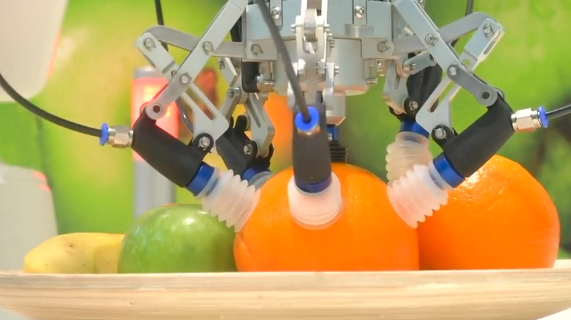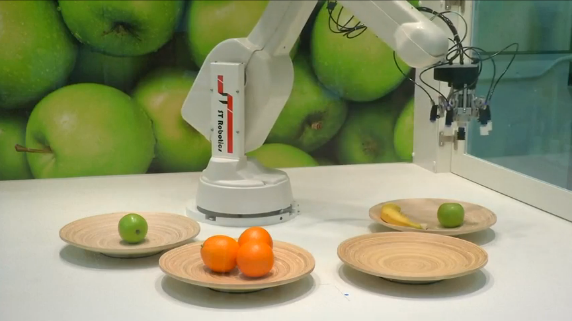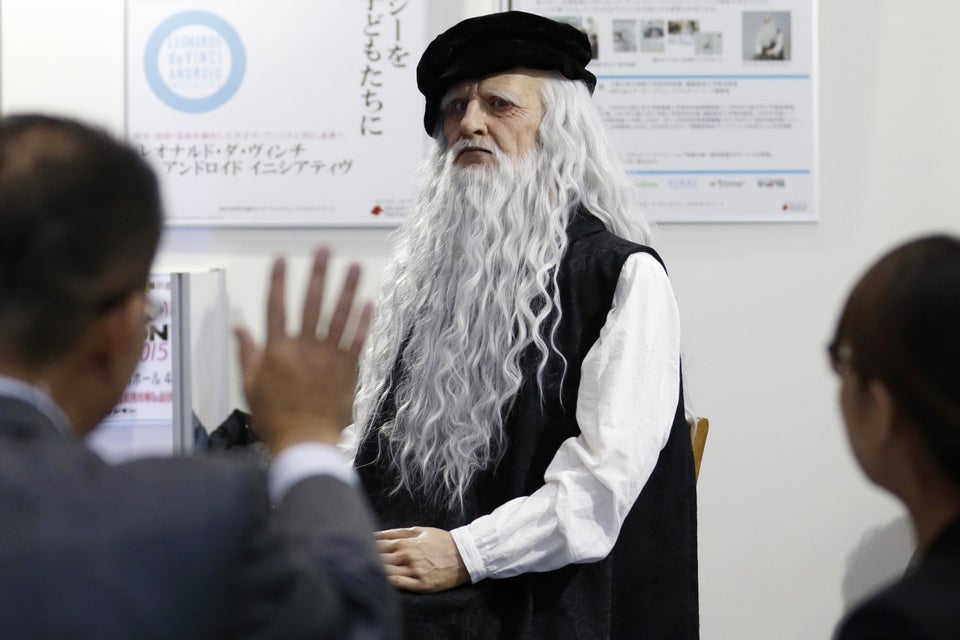Traditional robots are designed to perform the same task over and over again, but struggle when it comes to adapting to uncertainty or changing situations. But a new fruit-picking robotic system uses complex signal processing to pick and sort irregular shaped fruits without damaging them.
Built by development firm Cambridge Consultants, the robot could boost productivity across the food chain by sorting fruit and vegetables or, for example, identifying and removing weeds among crops in a field.
Using low-cost and easily available hardware, such as Microsoft's Kinect sensor, the scientists designed intuitive algorithms to give the robotic system a cognitive ability to work out how to best handle items that vary from shape to shape.
"Traditional robotic systems typically pick up exactly the same object from exactly the same place and move it to somewhere new; always doing the same action over and over again. But there are places, there are applications where robotics aren't used at the moment where they could be if you can build in this capability of dealing with natural variations and small changes in the environment into the robotic system itself," explained Chris Roberts, head of industrial robotics at Cambridge Consultants.

In order to be a useful tool for fruit and vegetable growers, the robot needs to recognize the correct objects and calculate the order in which to pick them. It also needs to plan which grip to use, and the lifting and placing of each item. The system is capable of handling objects for which no detailed computer-aided design (CAD) model exists, says Roberts.
Fundamental to the viability of the system is the design of the gripper which has to adapt to the shape of the fruit and securely grip it without damaging it.
"The gripper has got a sensor inside it so it can sense the pressure of the vacuum tubes as they close around the fruit. And by only applying a vacuum to the ones that gripped, the ones where there's a seal, we can spread the pressure across the fruit so we're not bruising it but we still apply a consistent pressure that allows us to pick up heavier objects," said Roberts.

To demonstrate the system in a laboratory setting, a selection of randomly stacked fruit was sorted into separate bowls. The machine's software identifies which piece of fruit is closest to the top and translates this information into co-ordinates and positions the 'hand' to pick the required fruit, whilst avoiding other objects. The system's algorithms take into account not only size and shape, but also color. This means, for example, that red apples can be separated from green apples.
Roberts says that the fruit-picking robot demonstrates an intelligent system that combines programing, electronics and mechanical engineering. But he believes similar 'smart' robots could transform a variety of industrial and commercial processes.
"Another area where this is applicable is when robots come to interact with people, people aren't as predictable as a production line. So the robot needs to be able to deal with changes in the environment and if someone moves an object from one place to another the robot needs to cope with that," said Roberts.
Also on HuffPost:

